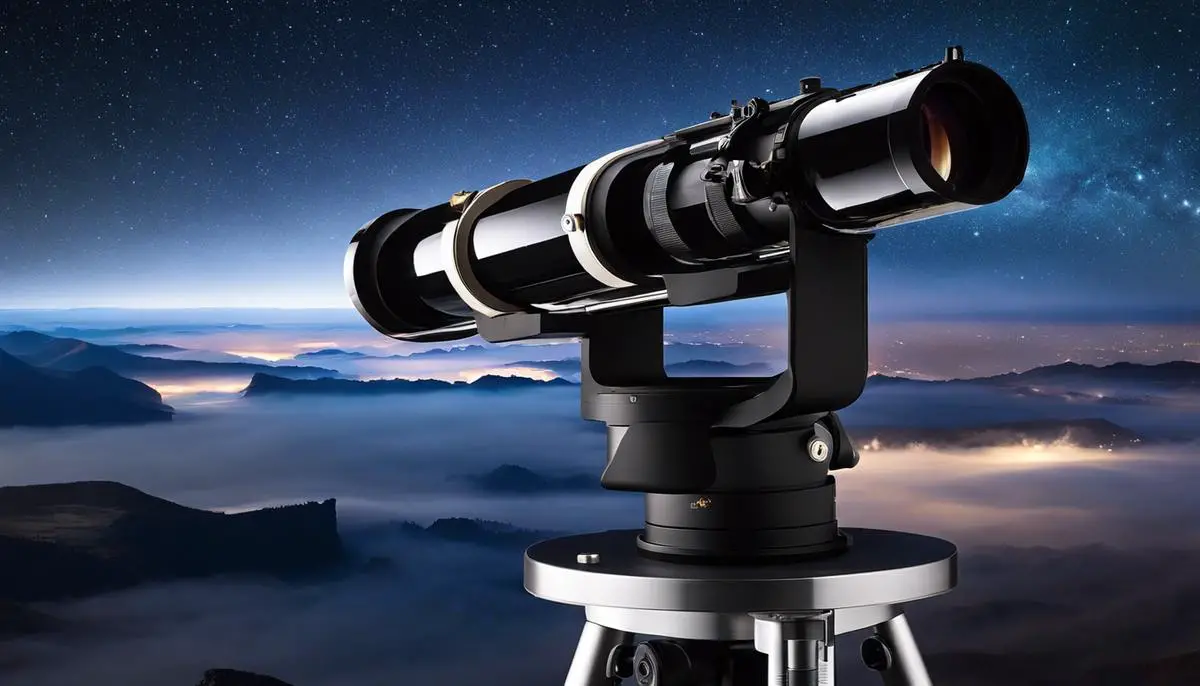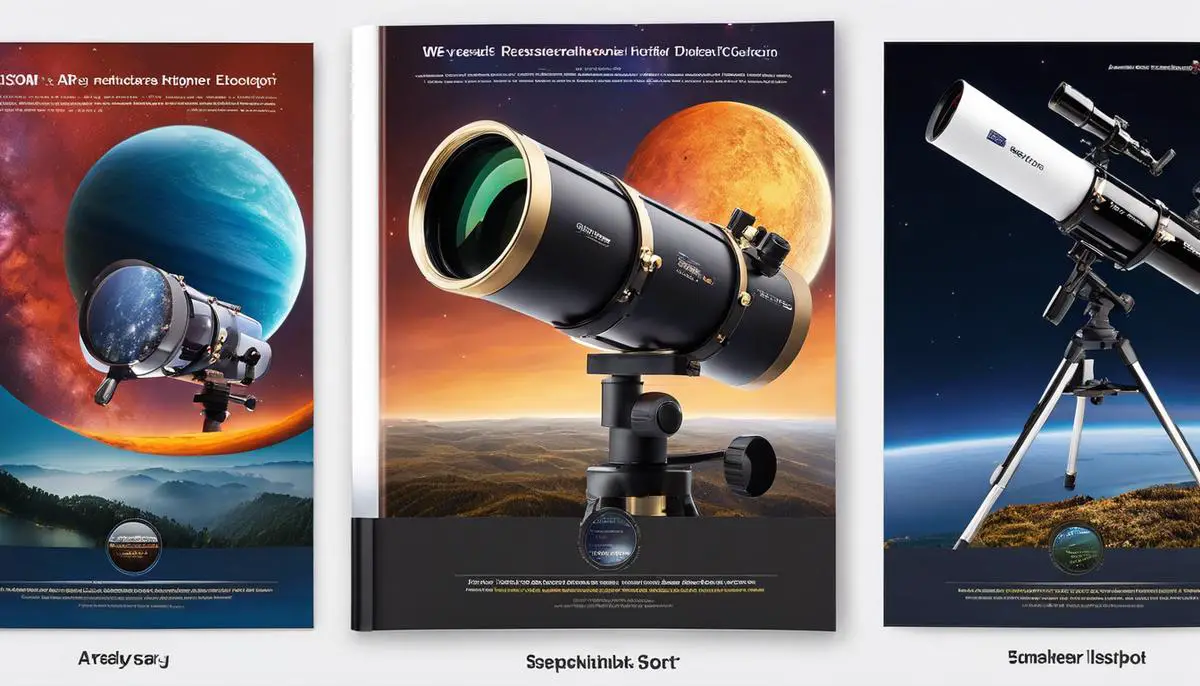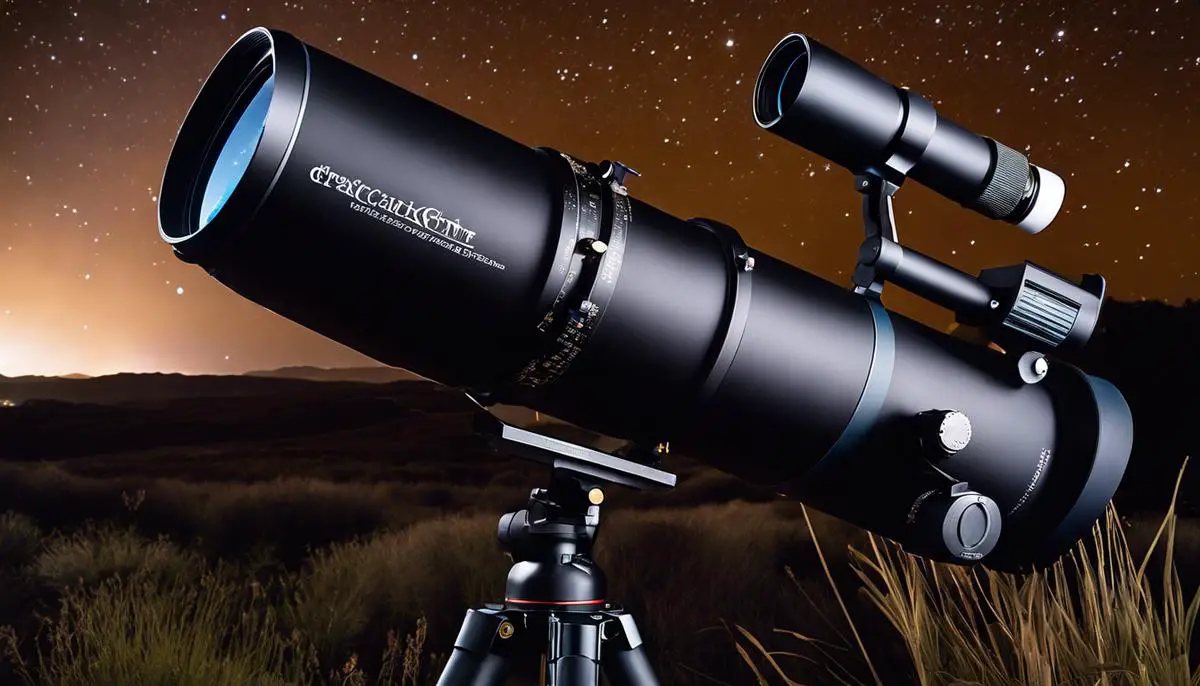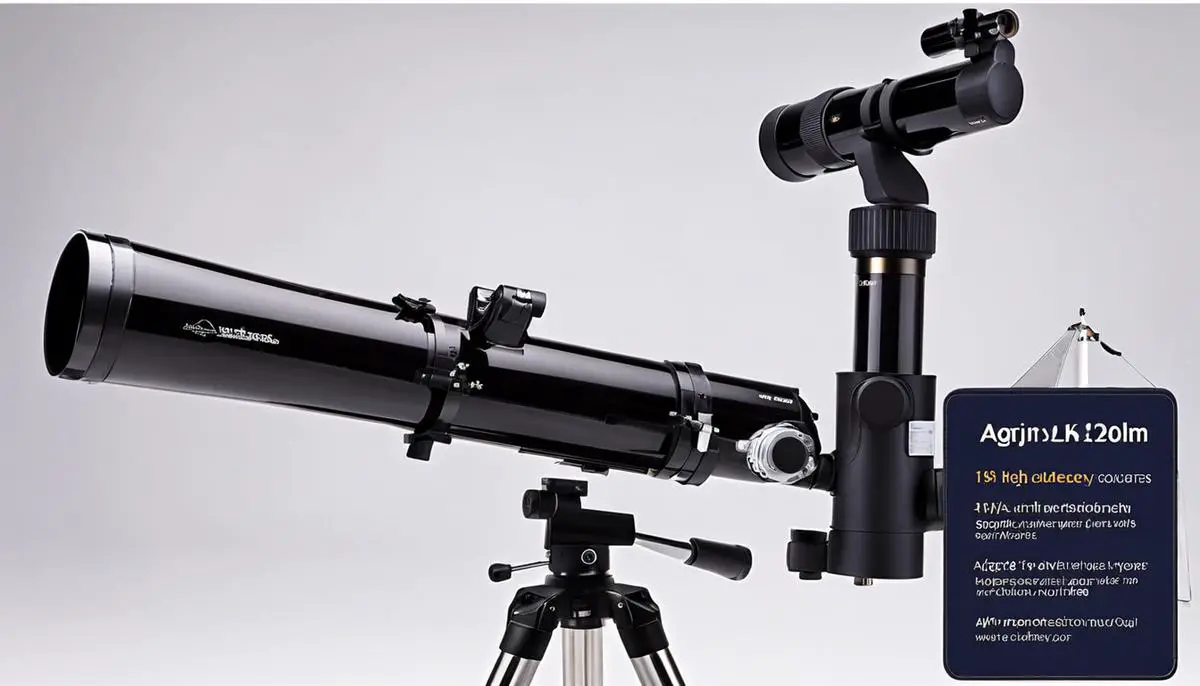Empowering minds to peer beyond the visible realms of our universe sets the foundation for profound discoveries and unparalleled scientific comprehension. The role of telescopes, acting as our ‘eyes’ into the cosmos, becomes increasingly pivotal in educational contexts. Helping to illuminate the captivating vastness of space – through giving us the ability to view celestial bodies up close – can inspire feats of imagination and inquisitiveness in learners. This piece delves into the intricacies of such an essential tool, exploring key functions of educational telescopes, the finest models for educational institutions, and the beneficial ripple effects of incorporating telescopic exploration into education on learning outcomes.
Key Functions and Features of an Educational Telescope
If one has an appetite to explore the cosmos, initiation into the beautiful discipline of astronomy starts with a telescope. This is a machine that transcends the barriers of human perception and lays bare the wonders of the universe beyond our celestial neighborhood. For a novice stepping into the realm of astronomy, understanding the core features of a beginner’s telescope is absolutely essential.
Firstly, aperture takes precedence over any other feature of a telescope. Denoting the diameter of the light-gathering lens or mirror (often referred to as the ‘objective’), the aperture is measured in millimeters or inches. A larger aperture captures more light, hence revealing detailed and brighter views of celestial objects. A quality telescope for beginners would have an aperture between 70mm to 100mm – ensuring exceptional clarity and bright images.
Second comes the ‘focal length’, the distance from the objective to the point where it gathers and focuses light. A longer focal length confers a larger image and more detail, albeit at a narrowed field of view. Still, for a beginner’s telescope, a focal length of around 400mm to 1000mm is recommended.
Amid the barrage of numbers, it is easy to overlook another crucial factor – the weight and size of the telescope. While a novice might be seduced by the power of a large telescope, an overly bulky and heavy instrument could make the stargazing exercise cumbersome and less enjoyable. Thus, it’s recommended that beginners choose compact and portable telescopes, which will ease the process of assembly, transportation, and storage.
Optical quality is another indispensable feature. A telescope`s purpose is sharply defeated without the superior optical quality that yields crisp, clear and color-true images. Achromatic or ‘APO’ refractor telescopes are preferred in this context, effectively minimizing chromatic aberration and ensuring high resolution.
In regards to telescope mounts – often the underdog in telescope discussions – availability of two types, altazimuth and equatorial, adds to the decision-making conundrum for beginners. The easy-to-use altazimuth mount moves up-down (altitude) and left-right (azimuth), akin to a camera tripod. An equatorial mount, on the other hand, aligns with Earth’s axis, proving useful for tracking objects as they move across the sky. For beginners, the simplicity of an altazimuth mount would be more feasible.
Last but not least, every telescope is incomplete without eyepieces. They magnify the image produced by the telescope. A good beginner’s telescope should come with a set of at least two eyepieces – usually a 10mm and a 25mm for a changeable magnification range.
In conclusion, a beginner’s telescope bridges the gap between the inquisitive mind and the vast universe. By shedding light on the essential features that a beginner’s telescope should possess – aperture, focal length, size and weight, optical quality, mount, and eyepieces – one can derive maximum educational value from this remarkably enlightening machine. In this pursuit, remember it’s not about what is observed but rather, the joy of observation that truly matters. Crack open the gateways to the cosmos and let the learning ensue!

Top Telescopes for Educational Institutions
Affordable Educational Telescopes: Empowering Tomorrow’s Astronomers
Where the passion for astronomy begins, schools and learning centers can ignite a love for the cosmos, sparking a profound learning journey through the expansive universe with the right telescope. Many professionally acclaimed telescopes are available which cater to the learning queries, curiosities, and budget constraints of educational institutions. A keen insight into these tools may reveal which options are best suited for your needs.
Understanding the requirements of budding astronomers, certain telescope models have been designed to offer easy, insightful observatories for celestial bodies. A quintessential example is the Celestron PowerSeeker 70EQ Telescope. It beckons with noteworthy features, including a 70mm aperture and 700mm focal length that provide crisp, detailed images. Contriving a harmonious balance between a wide field of view and fine details, its 3x Barlow lens triples the magnifying power of the eyepieces, reshaping observational astronomy for students.
Meanwhile, the Orion StarBlast II 4.5 Equatorial Reflector Telescope emerges as a compelling contender. With a respectable 4.5″ aperture, 450mm focal length, and steady equatorial mount, it promotes an immersive, steady celestial exploration. The parabolic mirror contributes to splendid optical quality, full of captivating detail. Its extensive accessories, including two Explorer II 1.25″ eyepieces, allows users to thoroughly explore the canvas of the night sky.
A versatile third option worth considering would be the Meade Instruments Infinity 102mm AZ Refractor Telescope. Achieving magnificent visuals with a 102mm aperture and 600mm focal length, it ensures a vacancy of optical aberrations with its air-spaced achromatic doublet lens. The altazimuth mount contained is perfect for easy tracking by novice astronomers. Furnished with three eyepieces and a 2x Barlow lens, beginners might find it tailored to their specific learning curves.
Within educational parameters, these telescopes cater to both budget and introduction into astronomy. They are assembled with the focal points of precision, clarity, ease of use, and affordability harmoniously entwined. By ensuring their accessibility, they empower those traversing the first steps of their cosmic journey, laying the foundation for a bountiful galaxy of knowledge. The celestial journey that schools and learning centers explore can initiate a lifelong love for understanding the universe, particularly when navigated with the guidance of a powerful and precise tool.

Boosting Learning Outcomes Through Telescopic Exploration
Broadening the Scope: The Effect of Tele-Teachability on Astronomy Education
Astronomy, an age-old discipline steeped in wonder, mystery, and discovery, is a field of scientific study ripe for academic cultivation. As elucidated in a previous discourse, the pathway to stargazing begins with a firm understanding of the fundamental aspects of a telescope – most notably, its aperture, focal length, optical quality, and mounting system. Moreover, it’s essential to appreciate how these features can be harnessed by beginner astronomers to explore the celestial expanse with a level of detail, accuracy and ease never thought possible. However, a critical component of this journey remains unexplored: the influence of technology-aided learning, specifically through the use of affordable, educational telescopes.
An analysis of the educational landscape reveals a new era of enlightenment in astronomical pedagogy. This is driven by cost-effective telescopes that have transformed the act of stargazing from a lofty pursuit to an accessible, engaging venture in scientific exploration. Brands such as Celestron, Orion and Meade Instruments have positioned themselves as trailblazers in this sphere.
Taking Celestron’s PowerSeeker 70EQ Telescope, for instance, its features include a 70mm aperture and a sturdy equatorial mount which suit the novice stargazer. This low-cost celestial periscope presents budding astronomers with an all-encompassing view of space, from nebulous star clusters to breathtaking nebulas, without straining their budget.
Similarly, the Orion StarBlast II 4.5 Equatorial Reflector Telescope is another testament to the democratization of astronomy. The StarBlast II packs a potent punch into a comparatively compact body through its wide 114mm aperture and adaptable equatorial mount.
Further broadening the gamut of affordability in telescopic technology is the Meade Instruments Infinity 102mm AZ Refractor Telescope. This affordably priced model delights users with its high-quality refractory optics, respectable 102mm aperture, and user-friendly altazimuth mount, making it a favored choice for beginners on a thrifty budget.
It is important to forge the connection between these affordable telescopes and their impact on burgeoning astronomers. Accessible telescopes have the potential to be instrumental in inspiring a new epoch of astronomy enthusiasts. They allow a tangible, intimate connection to the cosmos that an image in a textbook could never emulate.
Moreover, the vested interplay between affordable telescopes and educational institutions is noteworthy. Schools and learning centers functioning as launch pads for astronomical curiosity can leverage these telescopic resources to trigger galactic fascination and a thirst for discovery. This immersive approach to learning can etch a lifelong impression on students, sparking a passion for understanding the universe that endures well into adulthood.
In conclusion, the gateway to exploring the universe may be a few hundred dollars away, hidden in an affordable, educational telescope. It promises an educational journey erupting with celestial marvels that can put the cosmos within an arm’s reach, encouraging aspirant astronomers to reach out and touch the stars. Once unlocked, it promises a universe of possibilities, illuminating not just the night sky, but the minds that long to unravel its mysteries. Consequently, by fueling astronomical intrigue, these telescopes can propagate a vigorous, sustained interest in the field, resulting in an education overflow that encompasses classrooms, ignites minds, and eventually, reshapes our understanding of the cosmos.

Infusing the power of telescopic exploration into the educational landscape can invite deeper scientific understanding, provoke critical thinking skills and immerse learners in practical study of natural occurrences. All these outcomes not only amplify knowledge levels but also nurture a sustained interest in the cosmic sciences. Illuminating the skies above and laying bare the mysteries of the universe could be a mere star-gaze away. It is vital then, to select a students’ ‘gateway’ – the telescope – with care, understanding its features, finding optimum models for institutional use, and cherishing its potential to elevate learning experiences, serving an inquisitive spirit and fostering future generations of astronomers, scientists, and curious minds.
![]()
